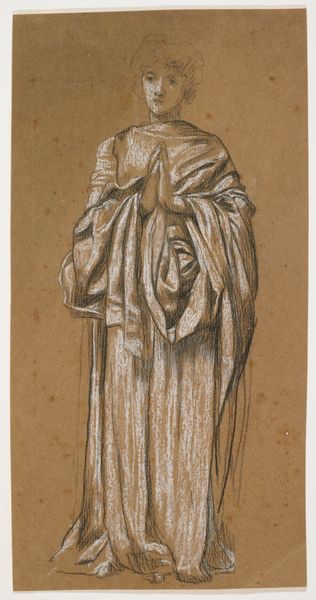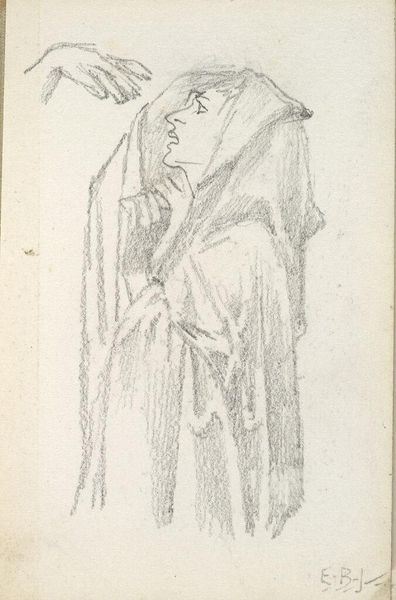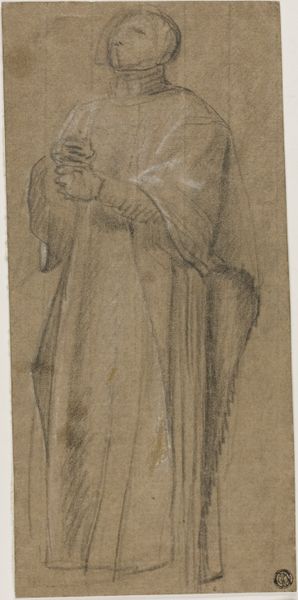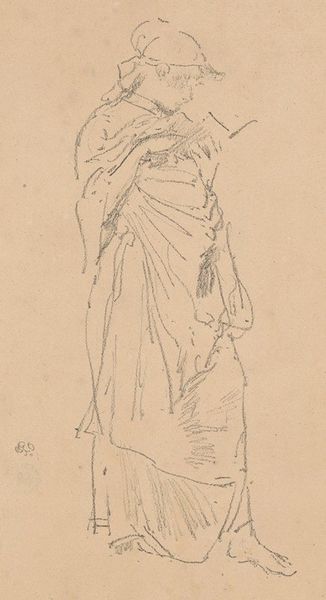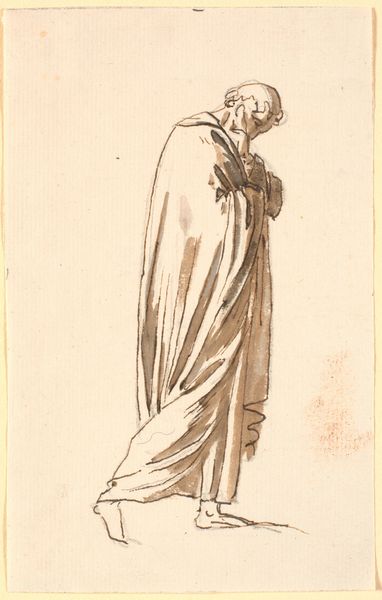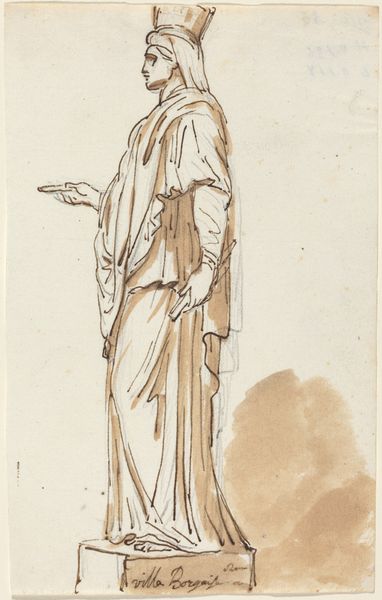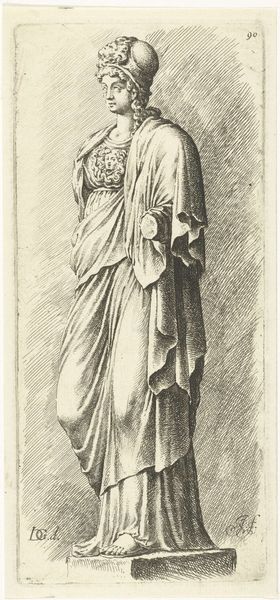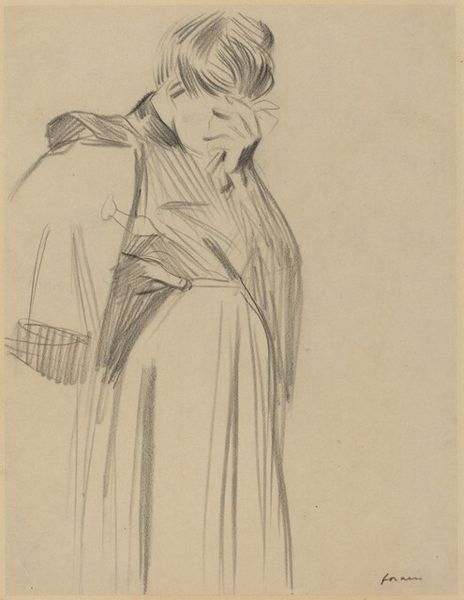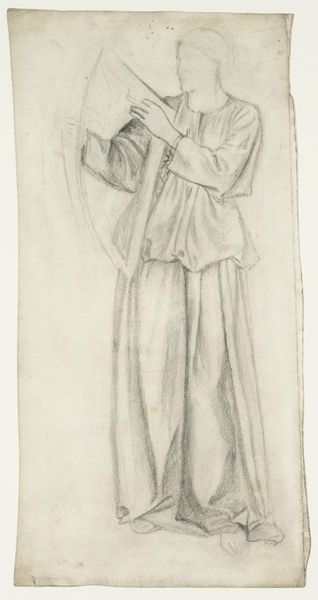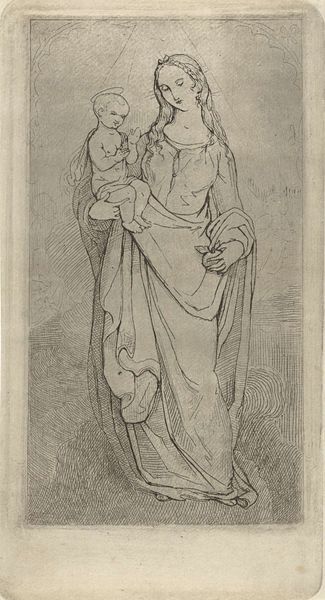
drawing, oil-paint, paper, ink, pencil, pastel
#
portrait
#
drawing
#
pencil sketch
#
oil-paint
#
figuration
#
paper
#
ink
#
pencil drawing
#
intimism
#
pencil
#
symbolism
#
pastel
Dimensions: overall: 64.3 x 44.6 cm (25 5/16 x 17 9/16 in.)
Copyright: National Gallery of Art: CC0 1.0
Curator: This is "Mother Cradling Her Child" by Maurice Denis. The artist used graphite, ink, and pastel on paper to realize it. Editor: There’s such stillness here. The restricted palette evokes a sense of reverence, or perhaps a hushed sorrow. Curator: Considering Denis’s Symbolist leanings and his devout Catholicism, it’s quite possible this reflects the archetypal Madonna figure. Maternal love, with its ties to divinity, were often used by him as subjects in many pieces from that time. How do you read the symbolic resonance within the social construction of motherhood that era? Editor: Well, consider the simplification of form, the deliberate archaicism...it taps into centuries of Christian iconography, immediately summoning images of the Virgin Mary and the infant Jesus. The mother’s downward gaze has so much weight: both earthly care, and almost a premonition of grief, which reflects Mary's acceptance of the prophesied fate of her son. Curator: Exactly, her stance—barefoot, modest garment—signals a connection to the earth, while the soft pastel highlights offer that sense of spirituality. There’s a tension between the everyday reality of motherhood and the idealized vision. In a patriarchal context, isn't the elevation of the mother inherently restrictive? How does this image participate in, or critique, that dynamic? Editor: It does seem both personal and universally relatable. Perhaps Denis wants to capture not just the ideal, but also that feeling when you gaze at a small child and recognize all the potential… Curator: Yes. I wonder how Denis himself viewed women and mothers in his private life; certainly this work hints that the artist engaged with Symbolism and the movement’s emphasis on spiritualism, which must also inform its themes about female roles in fin-de-siècle France. Editor: It makes you consider the image, as an artwork intended to offer reverence. Curator: Absolutely. It opens many dialogues regarding the intersection of art, religion, and lived experience, even in our world today. Editor: An encounter I won't forget soon!
Comments
No comments
Be the first to comment and join the conversation on the ultimate creative platform.

